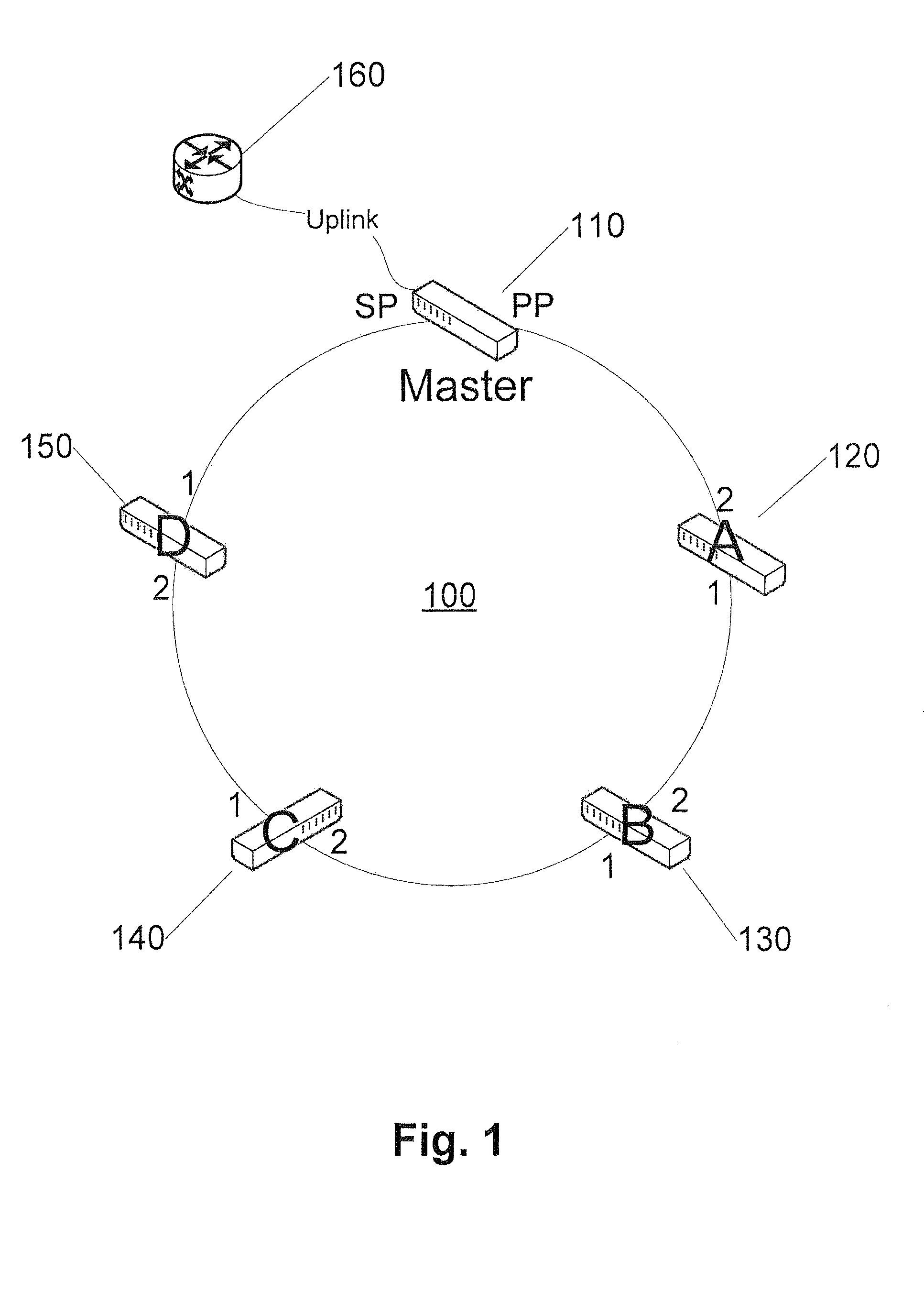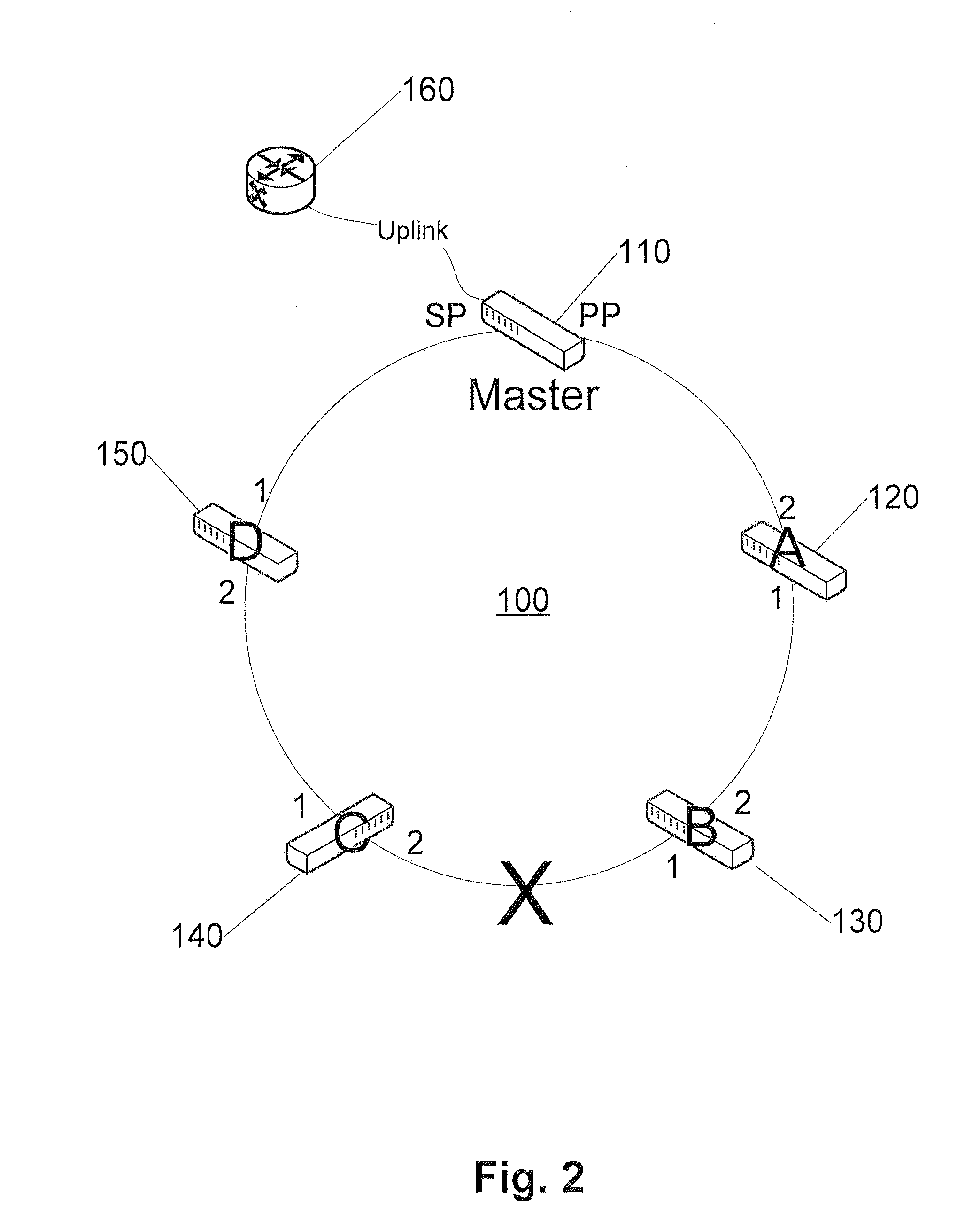System and method for network recovery from multiple link failures
a network recovery and multiple link technology, applied in the field of telecommunication networks, can solve the problems of failure to make failures and recovery transparent to subscribers, unreliable self-recovery, and falling behind of ethernet-based network communications of today, so as to prevent broadcast problems and enhance the resiliency of the network ring
- Summary
- Abstract
- Description
- Claims
- Application Information
AI Technical Summary
Benefits of technology
Problems solved by technology
Method used
Image
Examples
Embodiment Construction
[0019]Aspects of the present invention are described herein in the context of a system and method for detecting and recovering from single or multiple link failures in ring-type networks. Those of ordinary skill in the art will recognize that the following description is illustrative only and is not intended to be in any way limiting. Other aspects will readily suggest themselves to such skilled persons having the benefit of this disclosure. Reference will now be made in detail to implementations of aspects of the present invention as illustrated in the accompanying drawings. The same reference indicators will be used to the extent possible throughout the drawings and the following description to refer to the same or like items.
[0020]In the interest of clarity, not all of the routine features of the implementations described herein are shown and described. It will, of course, be appreciated that in the development of any such actual implementation, numerous implementation-specific d...
PUM
 Login to View More
Login to View More Abstract
Description
Claims
Application Information
 Login to View More
Login to View More - R&D
- Intellectual Property
- Life Sciences
- Materials
- Tech Scout
- Unparalleled Data Quality
- Higher Quality Content
- 60% Fewer Hallucinations
Browse by: Latest US Patents, China's latest patents, Technical Efficacy Thesaurus, Application Domain, Technology Topic, Popular Technical Reports.
© 2025 PatSnap. All rights reserved.Legal|Privacy policy|Modern Slavery Act Transparency Statement|Sitemap|About US| Contact US: help@patsnap.com



